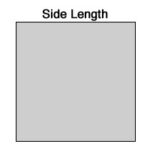In the digital age, academic research and content creation increasingly draw upon online video platforms like YouTube. Knowing how to properly cite a YouTube video in APA (American Psychological Association) format is essential for maintaining academic integrity and giving credit where it’s due. This guide provides a clear, step-by-step approach to citing YouTube videos according to the latest APA 7th edition guidelines, ensuring your references are accurate, credible, and contribute to the strength of your work.
Citing sources correctly is a cornerstone of academic and professional writing. It demonstrates thorough research, avoids plagiarism, and allows readers to explore your sources further. When it comes to online video content, the rules are just as rigorous. This article will break down the components of an APA citation for YouTube videos, offering examples and best practices to help you master this crucial skill.
Understanding APA 7th Edition Citation for YouTube Videos
The APA 7th edition manual offers specific guidelines for citing online sources, including videos hosted on platforms like YouTube. The core principle remains consistent: provide enough information for readers to locate the source themselves. For YouTube videos, this involves several key elements, carefully arranged to meet APA standards.
Key Elements for a YouTube Video APA Citation
To cite a YouTube video in APA format, you’ll typically need the following information:
- Author/Username: Identify who is responsible for the video. This could be an individual’s name or the username of the channel if the real name isn’t available. YouTube usernames are crucial for locating the video.
- Date: The year, month, and day the video was published on YouTube. This helps readers understand the context and recency of the source.
- Title of Video: The full title of the YouTube video, as it appears on the platform. Accuracy is key here.
- Source/Streaming Service: Clearly state that the video is from YouTube.
- URL: Provide a direct link to the YouTube video. Ensure the URL is correct and functional.
Format Example
Putting these elements together, a standard APA citation for a YouTube video looks like this:
Last Name, First Initial. [Username]. (Year, Month Date). *Title of video* [Video]. YouTube. URLFor example, citing a video from the popular science channel Kurzgesagt – In a Nutshell would look like this:
Kurzgesagt – In a Nutshell. (2018, November 29). *Is meat bad for you?* [Video]. YouTube. https://www.youtube.com/watch?v=sDg2OcEqk6kThis format ensures all necessary information is present, allowing anyone to easily find the referenced video. Now, let’s break down each step in more detail.
Step-by-Step Guide: How to Cite a YouTube Video in APA
Citing a YouTube video might seem daunting, but breaking it down into steps makes the process much simpler. Follow these instructions to create accurate APA citations for your video sources.
Step 1: Identify the Author (Username)
The “author” in a YouTube citation is the person or entity responsible for uploading the video. This is often the channel name or username.
- Channel Name as Author: If the channel name clearly represents an organization or personality (like “TED” or “National Geographic”), use the channel name as the author.
- Username in Brackets: If the real name of the author is known and different from the username, include the real name followed by the username in brackets, like
Last Name, First Initial. [Username]. If only the username is available, use the username as the author.
For instance, if you are citing a video by a user named “EducationalGuru” whose real name is John Smith, the author part would be: Smith, J. [EducationalGuru]. If you only know the username, it would be EducationalGuru.
Step 2: Find the Publication Date
Locate the date the video was published on YouTube. This is usually found below the video title, often displayed as “Published on [Month Day, Year]”.
- Year, Month Date Format: APA uses the format (Year, Month Date). For example, if a video was published on March 15, 2023, the date in your citation would be
(2023, March 15).
Step 3: Note the Video Title
Use the full title of the video exactly as it appears on YouTube.
- Italicize the Title: In APA 7th edition, the title of the video is italicized.
- Sentence Case Capitalization: Capitalize only the first word of the title and subtitle, and any proper nouns. For example, a title might be “How to Write a Research Paper“.
Step 4: Specify YouTube as the Source
After the title, you need to indicate that the source is a video and that it’s hosted on YouTube.
- “[Video]” in Brackets: Immediately after the title, add
[Video]in square brackets to clarify the medium. - “YouTube.”: Write “YouTube.” after the bracketed descriptor to specify the platform.
Step 5: Include the Video URL
The final element is the direct URL to the YouTube video.
- Full URL: Copy and paste the full URL from your browser’s address bar. Ensure it links directly to the video.
- No “Retrieved from”: APA 7th edition generally omits “Retrieved from” before URLs unless the source is unarchived and likely to change. For YouTube videos, simply include the URL.
By following these five steps, you can construct a complete and accurate APA citation for any YouTube video.
In-Text Citations for YouTube Videos in APA
In addition to the full reference list entry, you’ll also need to include in-text citations whenever you refer to or quote from the YouTube video in your paper.
- Author and Year: For in-text citations, use the author (or username) and the year of publication. For example:
(Kurzgesagt – In a Nutshell, 2018). - Timestamp for Direct Quotes: If you are directly quoting from the video, APA recommends including a timestamp to help readers locate the exact quote. For example:
(Kurzgesagt – In a Nutshell, 2018, 0:45). This indicates the quote is from 45 seconds into the video. - Username for In-Text Citation: If using a username as the author, use the username directly in the in-text citation:
(EducationalGuru, 2023).
Consistent in-text citations are crucial for linking your references back to the content of your paper and maintaining clarity for your readers.
Tips for Accurate and Effective YouTube Video Citations
To ensure your YouTube video citations are top-notch, consider these additional tips:
- Verify Information: Double-check all elements of your citation against the YouTube video itself – author, date, title, and URL.
- Use Official APA Resources: For any doubts or complex scenarios, refer to the official APA Publication Manual or the Purdue OWL website, a highly reputable resource created by Purdue University.
- Consistency: Maintain consistency in your citation style throughout your paper. If you are citing multiple YouTube videos or other sources, ensure all citations follow APA 7th edition guidelines uniformly.
- Archived Versions (If Necessary): While not typically required for YouTube, for sources that are likely to change and are unarchived, consider noting a retrieval date. However, for most YouTube videos, the publication date is sufficient as videos are generally not altered after publishing.
By paying attention to detail and following these guidelines, you can confidently cite YouTube videos in APA format, enhancing the credibility and academic rigor of your work.
Conclusion
Citing YouTube videos in APA format is a straightforward process when broken down into manageable steps. By identifying the author, publication date, title, source, and URL, and formatting them correctly, you ensure your citations are accurate and APA-compliant. Remember to use in-text citations appropriately and to double-check your work for consistency and accuracy. For further guidance and more examples of citing various electronic sources, refer to resources like the Purdue OWL website. Mastering APA citation for YouTube videos is a valuable skill in today’s information-rich world, helping you to properly acknowledge your sources and strengthen your academic and professional writing.

